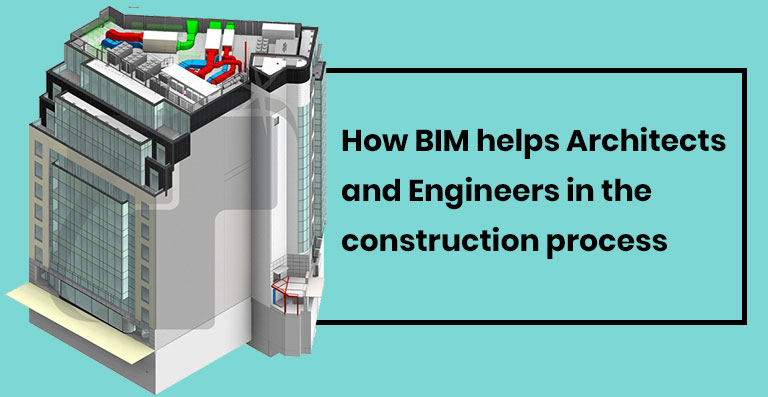How BIM helps Architects and Engineers in the construction process

Traditionally constructing a building is a tedious process – it requires multiple blueprints and models that are exchanged between architects, designers, engineers and contractors. With the advent of Building Information Model, the process of construction has been revolutionized. BIM significantly cuts down on the building time, enables facility management and provides an ease in coordination. By implementing BIM in the pre – designing phase engineers and architects can build faster and accurate buildings.
In the below article we will talk about how BIM can be useful in the construction process, looking at it both from the perspectives of the architects and engineers as well as the overall advantages in the construction.
BIM for Engineers and Architects:
Engineers and Architects require a wide range of skills and competencies in order to ensure a smooth construction process. They create complex systems and also find solutions to make better use of resources to construct buildings that are safe, sustainable, and durable. They have a multifaceted task on hand; to manage on-site construction, coordinate with other disciplines and vendors, etc. It is why BIM can be implemented to make their life easier and increase their efficiency.
BIM models are 3D geometric encoded that have the potential to add other dimensions like schedule, cost data, facility management etc. It enables an ease in construction supply chain which considerably reduces time spent analyzing management schedules and cost sheets. It incorporates three required capabilities essential for structural engineering i.e. geometry, material properties, and load condition for analysis. All this can be stored, edited, and retrieved from BIM. The virtual 3D Model also reduces RFI items from the contractors and manufacturers as it makes visualization of the project design possible to all stakeholders.
Engineers can also use BIM for manufacturing purpose. BIM Structural Services has allowed for increased use of prefabrication and modular construction. Ideally in a prefabrication components are created offsite and assembled on location. Any errors can lead to waste and hours of rework. Engineers can here, work in controlled environment with speed and precision.
Advantages of BIM in the construction process:
On top of aiding the engineers and architects, BIM also enables the development of a stable framework. Here every minute detail and all external damaging factors like stress, load, thermal effect, etc. are taken into consideration. BIM software can also develop structural 3D models of different parts of the building, making it possible to get a clear insight into both the interior and exterior 3D structural views. With 3D Virtual Model the health and performance of elements can be monitored, risk assessment can be carried out, and finally, even accurate 2D drawings can be extracted from the BIM Model reducing onsite inconsistencies.
The Intelligent 3D Model makes harmonization with other disciplines that form the building i.e. MEP BIM Services and Architectural BIM possible. Effective coordination means that there are no chances of clashes and that all spatial issues are addressed before the final model is created and implemented on-site.
With the use of BIM, there is less rework and waste on-site. It also streamlines the whole process so that there are cost reductions and an increase in profit margins.
Conclusion:
BIM can be used for all fields of construction like Commercial, Residential, Industrial, Educational, Health Care, etc. It makes it possible to get high-quality outcomes in less time. With the way BIM expedites the construction process, there is no doubt that the future will only see BIM being incorporated into the construction of more and more buildings.

